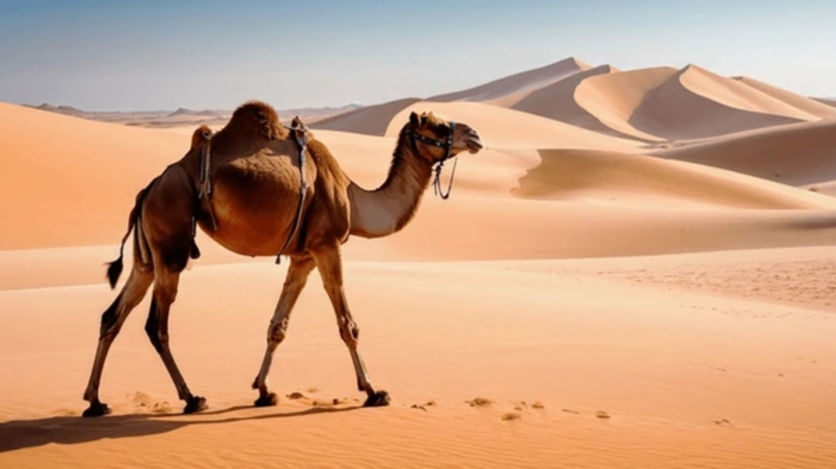For millennia, camels have been linked to the idealised desert landscape, frequently with the conjecture that their recognisable humps are water sources. The notion that camels retain water in their humps is a fallacy, even though they are remarkably suited to severe, desert settings.
What’s Inside the Hump of a Camel?
There is no water in a camel’s hump, despite what many people think. Rather, it is a substantial fat accumulation. When food is limited, these fat reserves provide an essential energy source that enables camels to go for extended periods without feeding.
A camel’s body uses the fat it has stored in its hump as fuel when it is starved for an extended period. The hump shrinks and may even drop as the fat is burned off. The hump will return to its natural form with proper rest and nutrition.
How Are Camels Able to Live for Such a Long Time Without Water?
The remarkable capacity of camels to endure for days or even weeks without water is due to further physiological adaptations:
Effective Water Retention: Water loss can cause camels to lose up to 25% of their body weight, which is lethal for most other species. Their bodies use water in extremely efficient ways, recycling it to reduce waste.
Distinct Blood Cells: Unlike the round cells present in the majority of animals, camel blood cells have an oval form. Even when water becomes scarce and the blood thickens, this special form facilitates easier blood flow.
Dry Faeces and Concentrated Urine: Camels don’t expel much water. Their faeces are so dry that they can be used as fuel for desert fires, and their urine is extremely concentrated.
Temperature Regulation: Because camels can withstand large variations in body temperature, they need less water to sweat.
Effective Drinking: Camels can refuel their stores by consuming up to 40 gallons (about 150 litres) of water in a single session when water is available.
Origins of the Myth
The misconception likely arose because camels can survive for long periods without water, making it seem as though they must have a hidden reservoir. The prominence of their humps might have fuelled the idea that water was stored there.
The True Superpower: The Ability to adapt
Camels are an example of the strength of adaptation rather than water storage. Their physiology has adapted to survive in harsh conditions, which makes them ideal for desert living.
Knowing these truths helps us better appreciate these amazing animals and emphasises how crucial scientific research is to busting myths. You can boldly correct anyone who brings up the idea that camels store water in their humps the next time!










